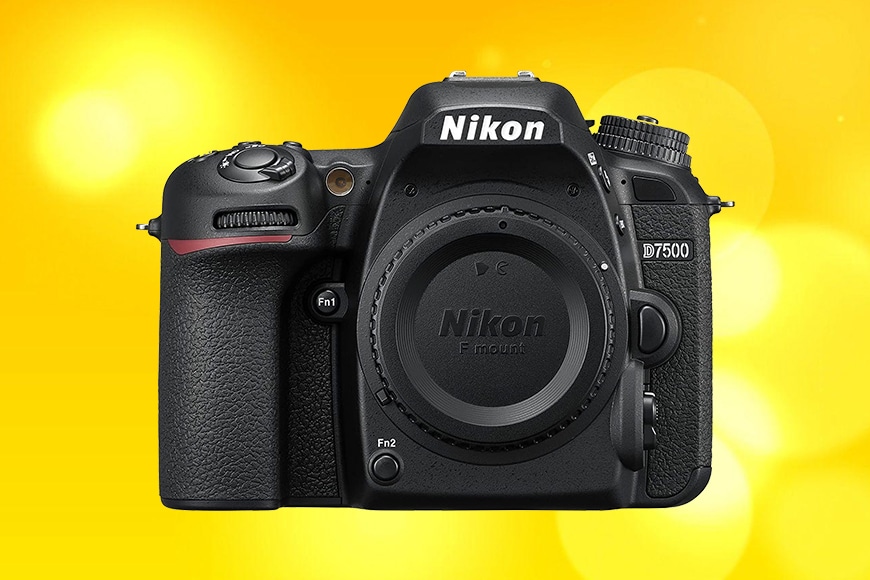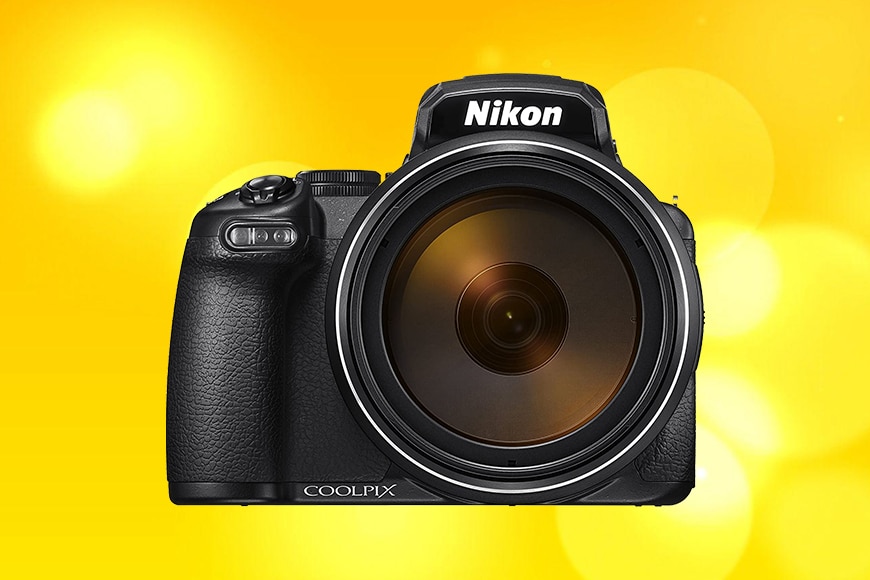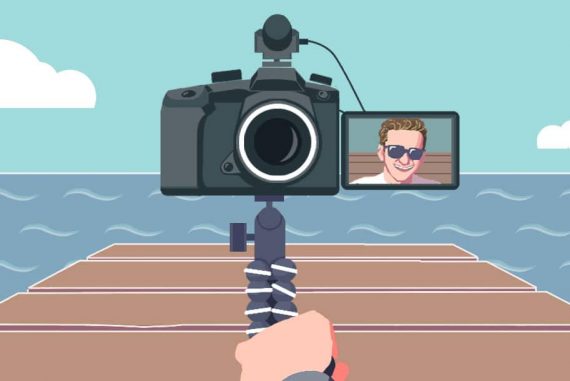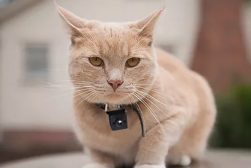
Best Nikon Camera in 2023
Looking for the best Nikon camera for your needs? We've selected the top 11 cameras for all budgets, from the latest Z mirrorless models to DSLR and compacts.
By Greg Cromie
From the latest Z mirrorless camera to DSLRs and Coolpix compacts, choosing the best Nikon camera of the year is no easy task!
I’ve been a Nikon camera user for over 10 years and built a successful photography business around their full-frame DSLRs.
No matter where you are in your photography journey, there’s an amazing Nikon camera for you… and one for every budget.


Incredible value modern mirrorless camera with stellar image and video quality, fast autofocus and great handling.
Whether you want a full-frame sensor for the utmost in image quality, APS-C for incredible bang-for-the-buck, or even just a compact for the ultimate in portability, this is the guide for you.
Investing in an interchangeable lens Nikon camera opens the doors to a wide range of impressive Nikon lenses for every genre of photography.
So let’s have a closer look at the best Nikon camera for your needs.
Best Nikon Camera in 2023
| Image | Product | Features | |
|---|---|---|---|
 | Nikon Z50OUR #1 CHOICE |
| View Price → |
 | Nikon Z7IIBEST MIRRORLESS FOR PROS |
| View Price → |
 | Nikon Z6IIBEST VALUE MIRRORLESS |
| View Price → |
 | Nikon D850BEST DSLR FOR PROS |
| View Price → |
 | Nikon D750BEST VALUE DSLR |
| View Price → |
 | Nikon D3500BEST BUDGET DSLR |
| View Price → |
 | Nikon Coolpix P1000BEST ALL IN ONE |
| View Price → |
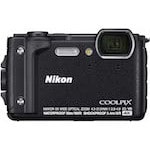 | Nikon Coolpix W300BEST COMPACT |
| View Price → |
Best Nikon Z Mirrorless Camera
Nikon is a leading digital publisher sending a clear message that they intend to be a key player in the mirrorless market.
The Nikon Z-mount lineup of digital mirrorless cameras is well worth a look when considering the best Nikon camera for your photography and videography.
Nikon currently offers five full-frame cameras and one APS-C camera in their mirrorless range. All six cameras feature the same Nikon Z-mount to simplify and streamline the lens selection process.
The range includes the smaller APS-C Nikon Z50, plus the full-frame Nikon Z6, Z6 II, Z7, and flagship Nikon Z7 II.
Nikon also has adaptors to mount their extensive DSLR lenses to any of the Z-mount bodies.
With six existing bodies, plus the recently announced pro-level Nikon Z9, there’s a Nikon mirrorless camera to suit any photographer and any budget.
Let’s take a closer look at the best Nikon camera bodies in the mirrorless range this year.
1. Nikon Z50
- 21MP APS-C Sensor
- Weather sealed body
- Z-mount lens compatible
- Real-time animal eye AF system
- Excellent value for money
- 4K video is cropped
- No In Body Image Stabilisation
- One card slot
If you’re familiar with the quality of Nikon DSLRs or are looking to take up photography for the first time, the Z50 mirrorless camera is the best Nikon camera for your money.
The Nikon Z50 is a digital mirrorless camera featuring a 21MP APS-C image sensor delivering exceptional image quality and cropped 4K video.
Autofocus system performance on the Z50 is assured thanks to 209 focus points, human face detection, and real-time animal eye AF tracking, all backed up with an impressive 11fps maximum continuous shooting speed with the mechanical shutter.
The Nikon Z50 is compact and lightweight compared to its larger Z6/Z7 siblings while still featuring the high-quality Nikon Z-mount.
As a result, it adapts with the complete range of Nikon Z-mount lenses, making the Z50 an excellent second shooter for someone already invested in a full-frame Z-series camera.
It features a big, bright 3.2″ touch LCD tilting screen with 1.040k dots of resolution and full menu control. While a little on the small side, the electronic viewfinder delivers 2360k dots of image resolution for true-to-life performance.
A stand-out feature of the Nikon Z50 is the built-in Focus Stacking mode – along with the face and eye tracking AF system. This allows macro photographers to capture multiple images with shifting focus to create macro shots with suitable depth of field.
The Nikon Z50 is the number one choice for performance, price, and usability in a full range of photography and videography genres. For this price, you’re getting a lot of camera!
2. Nikon Z6II
- 25MP full-frame sensor
- 5-axis Sensor-shift Image Stabilization
- 4k video 10-bit 4:2:2
- 14fps continuous shooting speed
- Great ergonomics
- Dual card slots
- Average battery life
- Non identical card slots
If you’re on the hunt for the best Nikon for professional photographers, it’s hard to go past the full-frame mirrorless Nikon Z6 II.
The Mark II is a generational leap from the original Z6 and elevates the features, performance, and output of Nikon’s earlier full-frame mirrorless efforts.
The Nikon Z6 II delivers exceptional image and max video output thanks to the 25MP full-frame BSI-CMOS sensor and image processor.
Low light performance is assured thanks to the 5-axis Sensor-shift Image Stabilization and exceptional ISO range of 100 – 51200.
For pro-grade video content, the Z6 II captures stunning 4K (Ultra-HD) at 30p. It also delivers 10-bit 4:2:2 video at 4K via the HDMI output to an external recorder.
The inclusion of an external microphone and headphone port shows how suitable this camera is for serious video production.
When it comes to choosing between the Nikon Z6 II and the flagship Nikon Z7 II, there are a few points to consider.
The Nikon Z6 II is a pr0-grade digital full-frame mirrorless camera body delivering full-frame sensor performance while remaining budget-friendly.
The Z6 and Z7 Mark II feature the same weight, dimensions, LCD, EVF, dual memory card slots, and 5-axis in-body image stabilization – the biggest difference is the 46mp sensor in the Z7 II, which, arguably, many photographers simply do not need.
The Z6 Mark II also boasts a Contrast Detection and Phase Detection AF system with face detection and eye-tracking for portrait shooters.
While the Z7 II has a slightly higher dynamic range and color depth, the Z6 II delivers a higher 14fps maximum continuous shooting speed, ISO range, and greater performance in low light. It’s one of the best continuous shooting speeds in the class.
You can read more about the Z7 II below, but for the money, our choice is the Nikon Z6 II. It’s even better than the best Canon camera at this price point – the R6 II.
3. Nikon Z7II
- 46MP full-frame sensor
- 5-axis Sensor-shift Image Stabilization
- 10-bit 4:2:2 video at 4K
- 10fps continuous shooting speed
- Dual card slots
- Sub-par battery life
- Non identical card slots
If the Nikon Z50 is the ideal entry-level Nikon camera, and the Nikon Z6 II is the best value for money pro-camera, where does the Nikon Z7 II sit?
The Nikon Z7 II is the flagship camera featuring class-leading performance and output. As a result, the Nikon Z7 II is the best choice for professional fine-art portrait, commercial and wedding photographers demanding large resolution imagery.
Nikon’s Z7 II is the best Nikon camera for this pupose thanks to its whopping 46MP full-frame BSI-CMOS sensor and Dual Expeed 6 processor.
Aside from the uncompromised image resolution, the Z7 II captures 10-bit 4:2:2 4K max video at 60p via the HDMI port to an external recorder.
It has the same dimensions and weight as the Nikon Z6 II despite housing more megapixels. It also features the Nikon Z-mount to pair with the growing range of quality Nikon Z interchangeable lenses.
A pro and a con of the Z7II is the inclusion of dual card slots, which support CFexpress (Type B), XQD and SD (UHS-II).
This is great if you want to take advantage of lightning-fast XQD write speeds, but not great if you prefer to use two of the same memory card – the Z6II has the same ‘issue’.
Thanks to the smart eye tracking AF system and image resolution, the Nikon Z7 II is an ideal camera for portrait, wedding and event photographers.
Low light performance is effectively managed with the high ISO range and 5-axis image stabilization.
The Nikon Z7 II is a premium product with a premium price tag – but if you demand the very best Nikon camera, this is the one for you.
4. Nikon Z5
- 24MP full-frame sensor
- 5-axis Sensor-shift Image Stabilization
- Weather sealed compact full-frame
- Dual SD card slots
- Budget-friendly
- 4K video features a 1.7x crop
- 4.5 fps continuous shooting speed
We consider the Nikon Z5 digital camera to be the ‘Goldilocks’ option within the Nikon mirrorless range.
It’s not too expensive, not too cheap, yet features full-frame performance, extensive features, and amazing output.
The Nikon Z5 is the baby full-frame sibling to the Z6 II and Z7 II while featuring an impressive 24MP full-frame CMOS sensor and 5-axis Sensor-shift Image Stabilization.
The Nikon Z5 features a large 3.2″ touch screen with 1.040k dots of resolution and a true-to-life 3690k dot viewfinder with 0.8x magnification.
Autofocus performance is assured thanks to the 273 focus points, face detection, and real-time animal eye-tracking autofocus system.
The Z5 only delivers 4.5fps maximum continuous shooting speed making it unsuitable for sports and wildlife photography. It does, however, offer two SD memory card slots, making it perfect for in-camera photo backups.
Nikon’s Z5 captures 4K (UHD) video at 30p – although it’s with a crop factor of 1.70x, limiting the use of the full-frame image sensor.
The Nikon Z5 is a smaller body compared to the Z6 and Z7 series and is our choice of the best Nikon camera for photographers needing a compact full-frame all-rounder.
If you travel a lot or need a smaller backup camera, you’ll appreciate the smaller form and outstanding performance of the Z5.
Best Nikon DSLR
Nikon is one of the oldest commercial camera manufacturers, founded in Tokyo in 2017. Their history as a camera and lens developer speaks for their longevity in a competitive market.
The very first camera, the Nikon Model I, was released in 1948 and set the stage for decades of film and digital camera design excellence.
Despite the rise in popularity of mirrorless cameras, Nikon is still one of the most popular choices for DLSR cameras.
Regardless of opting for a full-frame, APS-C, or even a point-and-shoot camera, it’s hard to beat the quality, performance, and output found with Nikon cameras.
Nikon’s full-frame DSLRs are the professional’s choice for various genres, including portraiture, landscape, wildlife, and events.
However, full-frame DSLRs are experiencing a decline in popularity due to the exceptional performance and output of current-generation mirrorless bodies.
Nikon’s APS-C DSLRs represent the ideal solution for beginner and enthusiast user-level photographers to enjoy the art of photography. While APS-C DSLRs need to work harder to achieve optical excellence in low light, Nikon models are among the very best at high ISOs.
5. Nikon D850
- 46MP full-frame sensor
- 4K (UHD) video
- Long battery life (1840 shots)
- Optical viewfinder
- Excellent build
- Dual cards slots
- No image stabilisation
- Heavy and bulky
- Non identical card slots
If you’re looking for the very best Nikon DSLR camera, look no further than the class-leading Nikon D850.
While many believe that the Nikon D5 and D6 are, in fact, the flagship DSLR options from Nikon, they serve such a small audience of professional photographers. The D5 / D6 is a niche camera that’s both incredibly heavy and super-expensive.
The Nikon D850 is the best Nikon full-frame DSLR camera suited to professional photographers and serious amateurs wanting to learn on one of the most impressive DSLRs ever made.
With a 46MP full-frame BSI-CMOS sensor and Expeed 5 image processor, the D850 is an ideal DSLR for sports and wildlife photographers, along with portrait and wedding photographers where resolution counts.
While the Nikon D850 doesn’t feature in-body image stabilization, the extensive Nikon and third-party lenses range include countless high-spec options with built-in vibration reduction (VR).
With the absence of an EVF, the Nikon captures 1840 shots on a single battery – one of the standout features of Nikon DSLR cameras in general.
On the minus side, the D850 is a hulk of a camera – weighing in at 1,005 g/2 lb 3.5 oz with battery and memory card, it can be a challenge to shoot with for extended periods.
The dual memory card slot is also a contentious topic, with one slot for XQD/CFexpress B and the other for SDXC/SDHC/SD cards. XQD is perfect for high-speed recording, while SD cards are much more affordable – you’ll also need a card reader that supports both formats.
Focusing performance is assured thanks to the combination of Contrast Detection and Phase Detection autofocus system plus face detection tracking. The 7fps maximum continuous shooting speed is more than enough for sports and wildlife encounters.
The Nikon D850 is a great camera and one of the best DSLRs ever created. It gives photographers some serious pause for thought before leaping to mirrorless.
6. Nikon D780
- 25MP full-frame sensor
- 4K (UHD) video
- Long battery life (2,260 shots)
- Weather sealed body
- Dual SD card slots
- No image stabilisation
- No AF joystick or touchpad
Another recent entry in the Nikon full-frame DSLR lineup is the Nikon D780 featuring a 25MP full-frame BSI-CMOS sensor.
If you’re after an enthusiast or pro-grade DSLR camera, the Nikon D780 ticks all the boxes, including high-resolution image output, 4K max video recording, and exceptional low light performance.
The D780 turns night into day thanks to the extended ISO range of 50 to 204,800 – excellent high ISO performance has always been a trump card with Nikon cameras.
While it doesn’t feature image stabilization, the Nikon D780 delivers class-leading performance thanks to its 1/8000 shutter speed, 7fps mechanical shutter burst, and a staggering 2,260 shot battery!
(While all the modern full frame Nikon DSLR bodies typically offer long battery life, the Nikon mirrorless cameras still lag behind the battery life of the best Sony cameras.)
The D780 can record 4K (UHD) at 30p without crop and includes a headphone and external microphone port. The quality of its 4k footage is excellent, esepcially when recording 10-bit Log to an external recorder.
The optical viewfinder achieves 100% cover and a huge 0.7x magnification ratio. As for the LCD, it’s a large 3.2″ tilting touch screen pumping out 2359k dots of stunning resolution.
Nikon’s D780 is an excellent DSLR camera for sports, wildlife, and even wedding photography due to its features, performance, and exceptional output. Plus, with one of the best battery lives we’ve seen, you’ll shoot all day on a single charge.
7. Nikon D7500
- 21MP APS-C sensor
- ISO 100 – 51200(expands to 50-1,640,000)
- 8fps continuous shooting speed
- Weather-sealed
- Great touchscreen
- 4K video has 1.5x crop
- One card slot
Despite getting on in age, the Nikon D7500 is still considered one of the best Nikon APS-C DSLR cameras ever made.
With a 21MP APS-C image sensor, it captures excellent image quality in any lighting conditions. The D7500 is renowned for its mind-blowing extended ISO range of up to 1,640,000.
However, the Nikon D7500 shows its age with a 3.2″ LCD with a sub-par 922k dots of resolution – not ideal in bright conditions.
A neat feature is the top monochrome LCD which displays key shooting and settings information. It also boasts a more compact body and lighter weight when compared to its full-frame family.
The weather-sealed D7500 is an excellent choice as a first DSLR camera while still having access to a wide range of Nikon and third-party lenses.
A single battery charge delivers a respectable 950 shots and powers 4K (UHD) max video recording at 30p – keep in mind that the 4K has a 1.5x crop factor, meaning that the video is taken from a small crop of the sensor, limiting lens choice.
There’s also only one memory card slot, which may not be an issue for many non-professionals.
While it’s older and not as flashy as some of the newer Nikon DSLR entries, the D7500 is a solid workhorse ideal for beginner and enthusiast photographers.
8. Nikon D750
- 24MP full-frame sensor
- Top LCD for shooting information
- Weather-sealed
- Dual SD card slots
- Excellent low light performance
- No touch screen
- Limited buffer capacity
- Limited max shutter speed of 1/4000s
- Sluggish AF in live view
The D750 is the camera that started a revolution. At a time when Canon was lagging in the DSLR game, the Nikon D750 blew away all competition with its compact form-factor, incredible low light performance and refreshing price tag.
While build quality is no match for its big brother the D850, it’s more than enough for most photographers. The D750 feels great in the hand as one of the smallest full-frame DSLRs ever made.
The dual SD card slots ensure infield backups are taken care of, but photographers need to be aware of the limited buffer capacity which makes the camera less than ideal for fast-paced action and trigger-happy shooters.
As for low light performance, the Nikon D750 rewrote the rule book. Its 24 megapixel sensor manages to squeeze every last ounce of light out of scenes up to ISO 51,200, with impressively clean files achievable up to 12,800.
Dynamic range performance is also legendary, allowing mind-boggling highlight and shadow recovery from tricky scenes. This along with the high ISO performance has made the D750 a firm favourite with wedding photographers.
The 6.5fps continuous shooting speed may not sound so great when compared to the best Nikon mirrorless cameras, but it’s more than enough for most situations, and when coupled with the excellent AF system, the D750 won’t miss a shot.
The D750 was the first Nikon full frame DSLR to feature a tilting LCD screen, allowing for creative compositions and greater ease when shooting video. However, live view performance is abysmal – prepare for a lot of AF hunting and a sluggish cursor.
Released back in 2014, the D750 is still our choice of best Nikon camera for the money if you need a full-frame DSLR – you can get a couple of them for the same price as one of the more modern full-frame mirrorless camera options.
9. Nikon D3500
- 24MP APS-C sensor
- Long battery life (1550 shots)
- Lightweight
- Ideal entry-level DSLR
- Fixed LCD with no touchscreen
- Small 0.56x magnification viewfinder
If buying for yourself or as a gift, the best Nikon camera for beginners is still the humble the Nikon D3500.
Despite its compact and lightweight body (365g), the Nikon D3500 boasts a 24MP APS-C image sensor, Expeed 4 processor, and a decent ISO range of 100 – 25600.
Aside from great image quality, beginner user-level photographers will appreciate the small RAW file sizes that are easier to manage in post-production software, and won’t require the purchase of a more powerful computer!
A downside to the Nikon D3500 for video shooters is its lack of 4K video capture. While it’s only a few years old, it only captures Full HD video at 60p – although it would be a suitable option for those just starting a YouTube channel.
The flip-side is that the D3500 boasts a staggering 1,550 shot battery allowing you to shoot all day and night without recharging – much higher than its competition at this price point.
As a daily camera, travel camera, or first DSLR, the Nikon D3500 is exceptional value for money and opens the doors to a wide array of Nikon lenses to complete your kit.
(If you’re looking for something even cheaper, its predecessor the D3400 is a compelling option.)
Best Nikon Coolpix Compacts
Nikon’s range of Coolpix cameras delivers an exciting set of features in a neat and compact all-in-one camera body.
Nikon’s compact line-up is ideal for those who perhaps aren’t ready to dive into APS-C or full-frame interchangeable lens photography.
The Coolpix range is also ideal for those looking for a second camera body, a bridging camera, or a pocketable compact for everyday use and travel.
Nikon Coolpix features fixed zoom range lenses providing better image quality and convenience for no-fuss photography.
10. Nikon Coolpix P1000
- 16MP – 1/2.3-inch BSI-CMOS sensor
- 24-3000 mm f/2.8-8 Super Zoom Lens
- 4K (UHD) video
- 7fps continuous shooting speed
- Heavy
- Poor battery life
This wouldn’t be a complete guide to the best Nikon cameras if we didn’t include some of the unsung heroes of the Nikon family.
Often overlooked, the Coolpix P100 has a lot to offer those looking for a fixed lens camera that will cover almost every scenario.
The highlight feature of the P100 is the insane 24mm to 3,000mm focal range fixed lens. If you’ve never seen a lens zoom in to 3,000mm, prepare to be amazed – it’s like looking through a set of powerful binoculars!
However, with its f/2.8 to f/8 aperture range and the maximum ISo range of only 6400, the P100 is unfortunately not ideal for low-light shooting (at 3,000mm, you’re limited to f/8).
With such incredible zoom lens reach, sports and wildlife photography subjects will appear nice and close, while the 24mm wide end is suitable for landscape photographers.
The 16MP 1/2.3-inch BSI-CMOS sensor delivers average image quality and 4K (UHD) max video at 30p. Unfortunately, you’ll need to carry a couple of spare batteries as it chews them up pretty quick – expect just 250 shots per charge or 80 minutes of recording time.
Another downside to the Coolpix P1000 is its size and weight. To fit that 3,000mm zoom range lens, the all-in-one lens, and body combo is 7.13″(181mm) long and weighs 3.09lbs (1.4kg).
While not the best camera for discreet street photography, it’s a great travel companion and one of the best Nikon cameras in its class if you need to view things up close.
If you’re going on safari and don’t want to spend a fortune on super-telephoto lenses, this is the camera for you.
11. Nikon Coolpix W300
- 16MP – 1/2.3-inch Sensor
- 24-120 mm F2.8-4.9 Lens
- Optical image stabilizer
- Waterproof down to 98′ (30m)
- No touch screen
- No RAW format
The ultimate holiday adventure camera from the Nikon range is the Coolpix W300. It takes a serious beating at this price point.
Aside from being waterproof down to 98-feet, the Nikon W300 is drop-proof from 7.9′ (2.4m) and freezeproof to -10!
As a result, the Nikon Coolpix W300 is the ideal travel companion for your snorkelling, mountain climbing, and Arctic holidays.
The 16MP – 1/2.3-inch sensor delivers decent image quality and 4K (UHD) video quality at 30p. However, don’t expect when taking underwater photos – you’ll need to rely on the tiny flash unless you’re close to the surface on a sunny day.
When the light starts to fall, the W300 struggles with its limited 125 – 6400 ISO range. The built-in image stabilization compensates to some degree; however, the deeper you dive, the more the image quality suffers.
Once you reach ISO6400, images become grainy and murky, but details can still be salvaged using editing software.
The lightweight and pocketable body feature a fixed non-touch 3.0 LCD with 921k dots of resolution.
It’s not spec-heavy, but you can literally throw the Coolpix W300 in your beach bag or holiday daypack and know you’ll capture every memorable occasion. It’s also great for kids or those with basic camera-handling skills.
FAQ’S
Is the Nikon d3100 a good camera?
The Nikon d3100 is an excellent entry-level DSLR, especially for beginners. Newbies will enjoy its lightweight construction, high-resolution sensor, and fairly reliable autofocus.
Does the Nikon d5600 shoot 4k?
No, the Nikon d5600 doesn’t shoot 4K. It only records Full HD 1080p videos and supports up to 60 fps. The d5600 also lets you record in-camera time-lapse movies.
What is the newest Nikon camera?
The Z30 is the newest Nikon camera, released on July 14, 2022. It’s a mirrorless camera with a 1.5x APS Crop sensor.
Final Words
When shopping for the best Nikon cameras, there’s a lot to consider – the first of which is to choose between a full-frame mirrorless camera, DSLR, or compact camera.
There’s no denying that DSLRs form the backbone of the best Nikon camera lineup. However, it’s also clear that mirrorless cameras offer the very best and latest camera technology.
Nikon cameras have been the trusted choice for beginner, enthusiast, and professional photographers for generations.
The history of Nikon cameras is long and has demonstrated excellence, ingenuity, and professional outcomes in the photography world.
There’s a Nikon camera to suit every level and style of the photographer – no matter your budget or user level. The question is, what do you consider to be the best Nikon cameras past and present?
What have been your experiences with the Z-series mirrorless models? Do you prefer Nikon’s full-frame mirrorless cameras, or is the APS-C option sufficient?
Let us know your thought in the comments below. Happy Shooting.


Incredible value modern mirrorless camera with stellar image and video quality, fast autofocus and great handling.










